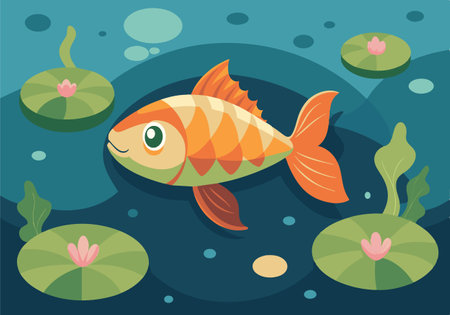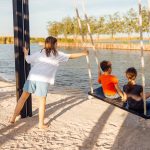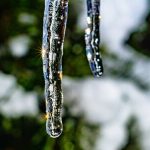1. Understanding Catch and Release
Catch and release is a fishing practice where anglers catch a fish, carefully unhook it, and then return it to the water. This method helps protect fish populations and ensures that future generations can enjoy fishing too. Its especially important in areas where overfishing or habitat loss has threatened local species.
Why Teach Kids About Catch and Release?
Kids are the future of fishing. Teaching them about catch and release early on helps build a strong foundation for responsible angling. It also encourages respect for nature and an understanding of how their actions can impact the environment.
The Benefits of Catch and Release
| Benefit | Explanation |
|---|---|
| Conservation | Helps maintain healthy fish populations by allowing fish to reproduce and grow. |
| Sustainability | Supports long-term fishing opportunities for everyone, including future generations. |
| Education | Teaches young anglers about ecosystems, responsibility, and ethical practices. |
How It Works
The basic idea is simple: after catching a fish, you handle it gently, remove the hook quickly, and return it to the water as soon as possible. Using barbless hooks, wetting your hands before touching the fish, and keeping it in the water while unhooking are all great ways to reduce stress on the fish.
Steps for Proper Catch and Release
- Use appropriate gear like barbless hooks and soft nets.
- Reel in the fish quickly to avoid exhaustion.
- Wet your hands before handling the fish to protect its slime coat.
- Keep the fish in the water as much as possible.
- Remove the hook gently and release the fish headfirst into the water.
A Fun Way to Learn
Youth fishing clinics, school programs, or family outings are great opportunities to introduce kids to catch and release. Making it fun while teaching them proper techniques will help them develop good habits from the start.
By learning about catch and release, kids not only become better anglers but also stewards of our natural resources. Its a small act that makes a big difference for our lakes, rivers, and oceans.
2. Engaging the Next Generation
Introducing kids and teens to fishing is about more than just catching fish—its a chance to teach them valuable life lessons about nature, conservation, and responsibility. By involving youth in catch and release practices, we help them develop a deeper appreciation for the outdoors and understand the importance of protecting our natural resources for future generations.
Why Youth Engagement Matters
When young people learn proper fishing techniques and outdoor ethics early on, they’re more likely to become lifelong advocates for wildlife conservation. Fishing is a great way to connect with nature, but it also teaches patience, respect for animals, and environmental stewardship. These values stick with them as they grow into adulthood.
Benefits of Teaching Catch and Release to Youth
| Benefit | Description |
|---|---|
| Respect for Wildlife | Learning catch and release helps kids see fish as part of a larger ecosystem rather than just a trophy or meal. |
| Outdoor Ethics | Youth gain an understanding of how their actions affect the environment and learn responsible behaviors in nature. |
| Hands-On Learning | Fishing provides practical experience that reinforces science concepts like habitat, biology, and sustainability. |
| Family Bonding | Fishing trips create opportunities for quality time between parents, guardians, and children. |
| Lifelong Hobby | Introducing fishing at a young age increases the chances it becomes a healthy, lifelong passion. |
Tips for Getting Kids Involved
- Start simple: Use basic gear and target easy-to-catch species like bluegill or sunfish.
- Make it fun: Keep outings short and engaging. Bring snacks, tell stories, and celebrate every catch—big or small.
- Teach gently: Show them how to handle fish carefully, wet their hands before touching, and explain why releasing fish helps keep waters healthy.
- Lead by example: Kids learn best by watching adults. Practice good habits yourself—like picking up trash, following regulations, and treating wildlife with respect.
- Join programs: Look into local fishing clinics or conservation groups that offer youth education events.
The more we involve young anglers in ethical fishing practices today, the better chance we have at preserving our waterways tomorrow. Its not just about catching fish—its about shaping future stewards of the great outdoors.
![]()
3. Hands-On Learning Opportunities
One of the best ways to teach kids about catch and release is by getting them involved in real-life fishing experiences. Hands-on learning helps young anglers build a connection with nature, understand the value of conservation, and develop skills that stick with them for life. Here are some fun and educational ways to create memorable outdoor learning experiences:
Youth Fishing Clinics
Youth fishing clinics are great for introducing kids to the basics of fishing and conservation. These events can be hosted by local parks, community centers, or wildlife agencies. Kids learn how to handle fish properly, identify different species, and understand why releasing fish safely back into the water is important for future generations.
Key Activities at a Fishing Clinic:
| Activity | What Kids Learn |
|---|---|
| Casting Practice | How to use a rod and reel safely and effectively |
| Fish Identification | Recognizing local fish species and their habitats |
| Catch and Release Demo | The right way to handle and release fish without harm |
| Knot Tying | Basic fishing knots used in everyday fishing |
Workshops on Conservation Skills
A workshop gives kids a deeper look into the “why” behind catch and release. These sessions can include interactive lessons on aquatic ecosystems, pollution prevention, and how overfishing affects fish populations. Including games or craft activities makes it even more engaging for younger audiences.
Fun Workshop Ideas:
- Create-a-Fish: Kids design their own fish species while learning what makes each one unique.
- Pond Life Exploration: Guided tours around local ponds or lakes with magnifying glasses or nets.
- “Be a Biologist” Stations: Simple science experiments that show how water quality affects fish health.
Guided Fishing Trips with Mentors
A guided trip pairs youth with experienced anglers who not only teach them how to fish but also model responsible behaviors like proper catch and release techniques. These trips offer real-world practice in a safe, supportive environment. They also help foster a lifelong appreciation for outdoor recreation.
Tips for a Successful Guided Trip:
- Select calm waters that are beginner-friendly.
- Use barbless hooks to reduce injury to the fish.
- Tie in stories or fun facts about the areas ecosystem.
- End the day with a group discussion or journal session about what was learned.
By combining education with experience, these hands-on opportunities make conservation meaningful for young people. It’s all about turning curiosity into care—and helping the next generation grow up as responsible stewards of our waters.
4. Best Practices for Catch and Release
When teaching kids about catch and release, its important to make sure they understand not just the “why,” but also the “how.” Using proper techniques helps keep fish healthy and increases their chances of survival after being released. Here are some simple, kid-friendly practices to follow:
Handle Fish with Care
Kids should learn to be gentle when handling fish. Wetting their hands before touching the fish helps protect its slime coating, which is essential for keeping the fish healthy. Avoid squeezing the fish or putting fingers in its gills.
Use Barbless Hooks
Barbless hooks make it easier to release a fish quickly and safely. They reduce the amount of injury caused during unhooking and are perfect for young anglers who are still learning how to handle gear.
Minimize Out-of-Water Time
The less time a fish spends out of water, the better. Teach kids to keep the fish in the water as much as possible, even while removing the hook. If they want a photo, have them get ready first and then take a quick shot before gently releasing the fish back.
Quick Tips for Kids
| Dos | Donts |
|---|---|
| Wet your hands before touching a fish | Touch a fish with dry hands |
| Use barbless hooks | Use large or barbed hooks unnecessarily |
| Keep fish in the water as much as possible | Leave fish out of water too long |
| Be gentle when removing the hook | Poke or squeeze the fish roughly |
| Release the fish slowly into calm water | Toss the fish back carelessly |
Make It Fun and Educational
You can turn these best practices into a game or checklist for kids. For example, give them points for each step they remember or let them earn a badge for completing all steps correctly during a fishing trip. This keeps them engaged while learning how to protect wildlife responsibly.
5. Community Involvement and Outreach
Getting young people excited about catch and release fishing starts with the community. When local schools, clubs, and organizations come together, they can create lasting conservation habits among kids. Heres how communities can work together to support this effort.
Partnering with Schools
Schools are a great place to introduce students to fishing and conservation. Teachers can include lessons on aquatic ecosystems, fish species, and responsible fishing techniques in science or outdoor education classes. Organizing field trips to local lakes or rivers gives students hands-on experience with catch and release practices.
Ways Schools Can Get Involved
| Activity | Description |
|---|---|
| Classroom Lessons | Include topics like fish biology, habitats, and the importance of conservation. |
| Field Trips | Take students to nearby fishing spots to practice safe catch and release methods. |
| Guest Speakers | Invite local anglers or wildlife experts to share real-world experiences. |
Engaging Local Clubs and Organizations
Fishing clubs, scout groups, and community centers play an important role in outreach. These groups often have resources and volunteers who can mentor youth. Hosting free clinics or weekend workshops can help more kids learn the right way to fish while protecting nature.
Examples of Club Activities
| Club Type | Possible Activities |
|---|---|
| Youth Fishing Clubs | Organize catch and release tournaments with prizes for participation. |
| Boys & Girls Clubs | Create after-school programs focused on fishing skills and conservation values. |
| Outdoor Recreation Groups | Host family fishing days that teach parents and kids together. |
Community Events That Make a Difference
A well-planned event can reach hundreds of families at once. Consider organizing annual community fishing days, conservation fairs, or “Fish and Learn” sessions at public parks. These events bring people together and highlight the importance of releasing fish safely back into the water.
Tips for Successful Community Outreach Events:
- Partner with local businesses for sponsorships or gear donations.
- Advertise through school newsletters, social media, and local newspapers.
- Offer hands-on activities like casting practice or knot-tying stations.
- Provide take-home materials so families can continue learning after the event.
The more we involve schools, clubs, and community members, the stronger our conservation message becomes. By working together, we give kids the tools they need to respect nature and become responsible anglers for life.
6. Success Stories and Resources
Teaching kids about catch and release fishing isnt just about rules—its about building respect for nature and creating lifelong stewards of our waters. Across the U.S., many programs have successfully introduced youth to responsible fishing practices. These success stories show that with the right education and outreach, young anglers can make a big difference.
Real-Life Success Stories
Here are a few inspiring examples of how youth-focused catch and release education has made an impact:
| Program Name | Location | Impact |
|---|---|---|
| Tacklebox Kids Program | Florida | Over 5,000 students taught proper catch and release techniques, leading to reduced fish mortality in local lakes. |
| Junior Anglers Club | California | Youth participants helped tag and release over 1,200 fish for conservation research. |
| Hooked on Fishing, Not on Drugs (HOFNOD) | Nationwide | Combined life skills with fishing education; promoted ethical angling among thousands of middle schoolers. |
Kid-Friendly Resources
To help parents, teachers, and volunteers teach catch and release to youth, here are some age-appropriate tools and guides:
Books and Guides
- “Catch & Release for Kids” – A colorful picture book explaining the basics for ages 5–8.
- “Smart Anglers Handbook” – A beginners guide with illustrations for tweens learning ethical fishing.
Online Learning Tools
- TakeMeFishing.org – Offers interactive games and videos about fish species and conservation tips.
- US Fish & Wildlife Service Youth Programs – Includes educational materials for schools and camps.
Youth Workshops and Events
- C.A.S.T. for Kids Foundation Events: Special fishing days where kids learn how to handle fish gently and release them safely.
- Local Conservation Camps: Many state parks offer summer programs focused on sustainable outdoor skills, including catch and release fishing.
The Ripple Effect of Early Education
When kids learn about catch and release early on, they often become advocates for conservation in their communities. Parents report that children remind adults to use barbless hooks or wet their hands before handling fish. Some young anglers even lead peer workshops at school or create educational posters for local tackle shops. These small actions add up to big change over time.
The more we share these stories and resources, the more we can inspire the next generation to protect our fisheries—and enjoy them responsibly for years to come.


